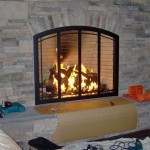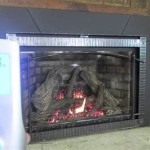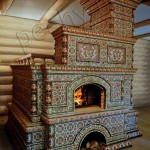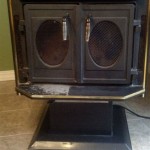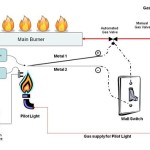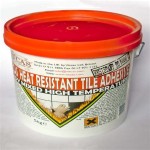Outdoor Corner Fireplaces: A Comprehensive Guide
Outdoor living spaces have become increasingly popular, offering a seamless blend of indoor comfort and outdoor serenity. Within this growing trend, the outdoor corner fireplace has emerged as a focal point, adding warmth, ambiance, and architectural interest to patios, decks, and gardens. This article provides a comprehensive overview of outdoor corner fireplaces, discussing their design considerations, material options, installation guidelines, and maintenance requirements.
The primary appeal of an outdoor corner fireplace lies in its ability to effectively utilize space while delivering a significant aesthetic impact. Unlike traditional fireplaces that typically occupy a central wall, corner fireplaces can be tucked neatly into a 90-degree angle, making them ideal for smaller outdoor areas or spaces where maximizing seating and traffic flow is paramount. This design also allows for a broader viewing angle of the flames, creating a more immersive and engaging experience for those gathered around.
Design and Planning Considerations
Before embarking on the installation of an outdoor corner fireplace, careful planning and design are crucial. This involves considering several factors, including the overall style of the outdoor space, the desired size and height of the fireplace, and the prevailing wind conditions in the area. A thorough assessment ensures that the finished product is both aesthetically pleasing and functionally sound.
The architectural style of the surrounding structure should heavily influence the design of the fireplace. A modern home may call for a sleek, minimalist design with clean lines and smooth surfaces, while a more traditional setting might benefit from a rustic stone fireplace with a more textured appearance. The fireplace should complement the existing architecture, enhancing the overall aesthetic appeal of the outdoor space.
The size and height of the fireplace must be carefully considered in relation to the surrounding area. A fireplace that is too large can overwhelm a small patio, while one that is too small can be easily lost in a larger space. The height of the chimney should also be carefully calculated to ensure proper drafting and prevent smoke from blowing back into the seating area. Local building codes often dictate minimum chimney heights, so it is imperative to consult with local authorities before construction begins.
Prevailing wind conditions can significantly impact the performance of an outdoor fireplace. Wind can cause smoke to blow back into the seating area, making it uncomfortable to use the fireplace. To mitigate this, consider the prevailing wind direction and adjust the orientation of the fireplace accordingly. In some cases, a windbreak, such as a fence or strategically placed landscaping, may be necessary to protect the fireplace from strong winds.
Furthermore, safety must be a primary consideration. Ensure the fireplace is located a safe distance from any flammable materials, such as trees, shrubs, or furniture. It is also essential to install a spark arrestor on the chimney to prevent embers from escaping and potentially causing a fire. Consult with local fire safety regulations to ensure compliance.
Material Options and Construction Techniques
The selection of materials for an outdoor corner fireplace is a critical decision that impacts both its aesthetics and its durability. Common materials include stone, brick, concrete blocks, and stucco. Each material offers unique advantages and disadvantages in terms of cost, appearance, and resistance to weather and wear.
Stone is a popular choice for outdoor fireplaces due to its natural beauty, durability, and ability to blend seamlessly with the surrounding landscape. Various types of stone are available, including fieldstone, river rock, and limestone, each offering a distinct texture and color palette. Stone is relatively expensive compared to other materials, but its longevity and timeless appeal make it a worthwhile investment.
Brick is another commonly used material for outdoor fireplaces, offering a classic and versatile aesthetic. Brick is relatively affordable, easy to work with, and readily available in a wide range of colors and textures. It is also highly durable and resistant to fire and weather. However, brick can require more maintenance than stone, as it may be susceptible to cracking or spalling over time.
Concrete blocks provide a cost-effective and structurally sound foundation for outdoor fireplaces. They can be used as a base for stone or brick veneer, or they can be finished with stucco for a more modern look. Concrete blocks are highly durable and resistant to fire and weather, making them a reliable choice for outdoor applications. However, they lack the aesthetic appeal of stone or brick and may require additional finishing to achieve the desired look.
Stucco is a versatile material that can be applied over concrete blocks or other substrates to create a smooth, seamless finish. Stucco is relatively inexpensive and can be tinted to match a wide range of colors. It is also relatively easy to apply and maintain. However, stucco is less durable than stone or brick and may be susceptible to cracking or chipping over time, particularly in areas with harsh weather conditions.
The construction of an outdoor corner fireplace typically involves building a concrete foundation, laying the chosen material in a staggered pattern, and constructing a firebox and chimney. Proper mortar application and reinforcement are crucial to ensure the structural integrity of the fireplace. It is recommended to hire a qualified mason or contractor to handle the construction, particularly if you are not experienced in masonry work.
Installation Guidelines and Safety Protocols
Installing an outdoor corner fireplace requires careful adherence to safety protocols and local building codes. Proper installation ensures the fireplace functions safely and efficiently, minimizing the risk of fire and other hazards. Before beginning the installation process, it is essential to obtain the necessary permits and consult with local authorities to ensure compliance with all applicable regulations.
The foundation of the fireplace must be level and stable to support the weight of the structure. A concrete slab is typically used as the foundation, and it should be reinforced with rebar to prevent cracking. The foundation should extend beyond the footprint of the fireplace to provide additional support and stability.
The firebox is the heart of the fireplace and must be constructed of fire-resistant materials, such as firebrick or refractory cement. The firebox should be properly sized to accommodate the desired size of the fire and should be equipped with a damper to control airflow. The damper should be easy to operate and should seal tightly when closed to prevent drafts.
The chimney is responsible for venting smoke and gases away from the seating area. The chimney should be constructed of fire-resistant materials and should be properly insulated to prevent heat loss. The height of the chimney should be carefully calculated to ensure proper drafting and prevent smoke from blowing back into the seating area. A spark arrestor should be installed on the chimney to prevent embers from escaping and potentially causing a fire.
Proper ventilation is crucial for the safe operation of an outdoor fireplace. The fireplace should be located in an area with good airflow to ensure that smoke and gases are dispersed quickly. Avoid placing the fireplace in enclosed spaces or near flammable materials. Regularly inspect the chimney for obstructions and clean it as needed to ensure proper drafting.
Always follow established safety guidelines when using an outdoor fireplace. Never leave a fire unattended and keep a fire extinguisher or water hose nearby in case of emergency. Supervise children and pets closely when the fireplace is in use. Be aware of wind conditions and adjust the fire accordingly to prevent sparks from escaping. Properly extinguish the fire before leaving the area and dispose of ashes in a metal container.
Regular maintenance is essential to ensure the longevity and safe operation of an outdoor corner fireplace. This includes cleaning the firebox and chimney regularly, inspecting the structure for cracks or damage, and repairing any necessary repairs promptly. By following these guidelines, you can enjoy the warmth and ambiance of your outdoor corner fireplace for many years to come.

Excellent Corner Outdoor Fireplace Popular Backyard Patio Designs

Outdoor Fireplace Kits Stonewood S Cape Cod Ma Nh Ct

Elliott Fireplace And Grill Diy Construction Plan

Top 25 Outdoor Fireplace Ideas That Everyone Will Love

Saguaro Diy Outdoor Fireplace Plan Denmark

Tips For Planning Your Outdoor Fireplace

How To Build An Outdoor Fireplace Step By Guide Buildwithroman

Outdoor Living Area With Corner Fireplace In Irving Las Colinas Custom Patios

Galleries

Outdoor Corner Fireplaces
Related Posts

